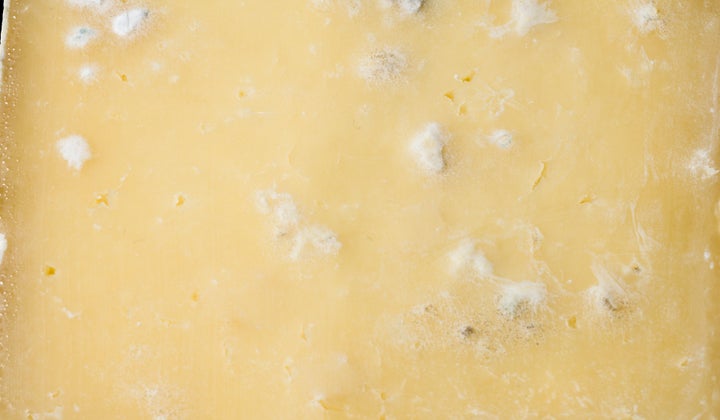
Before you ask ― yes, I do know that some cheeses are naturally mouldy. But some dairy delights, like feta and Parmesan, are meant to stay pale yellow, so what happens if you spot some spores on those?
We at HuffPost have written before about whether it’s safe or unsafe to eat mould on cheese (in short, hard cheeses can have spoiled sections cut out of them and they’re fine; not so with soft cheeses, which must be thrown out).
But it turns out that the colour of your mould can also be a sign of its safety.
What if I have white or greeny-blue mould on my cheese?
Let’s stress the fact again ― for soft cheeses, like feta, brie, marscapone, ricotta, and others, you need to discard them if you spot mould.
But if you’re cutting out mould from harder cheeses like mature Cheddar, Parmesan, or Pecorino Romano (which requires a two-inch border for safety), green and white moulds indicate it might be fine.
EatingWell says: “With white, fuzzy mould, tinged with green, the flavour effect is minimal and the mould can be safely cut away without incident.”
And Rich Morillo, cheese expert and cheese operations manager for Di Bruno Bros., told Bon Appetit more or less the same thing ― “most of the time you can simply cut it off [of hard cheeses] and go on living your life”.
What if I have black or grey mould?
Morillo revealed that most mould which grows on cheese is essentially harmless ― with one exception, the “the dark black-grey mould Aspergillus niger”.
The Centre for Disease Control revealed that this can lead to the respiratory condition aspergillosis. It can also appear on apricots, grapes, onions, and more. But if you spot it on cheese, chuck it out ― better safe than sorry.
And Healthline warns that any cheese which smells of ammonia is likely spoiled and has been exposed to too much water ― this has gotta go, too.
If you’re not sure about your cheese’s mould, if you don’t feel comfortable eating it, or just if you’d rather be safe than sorry, hey ― there’s no shame in chucking it away, either.